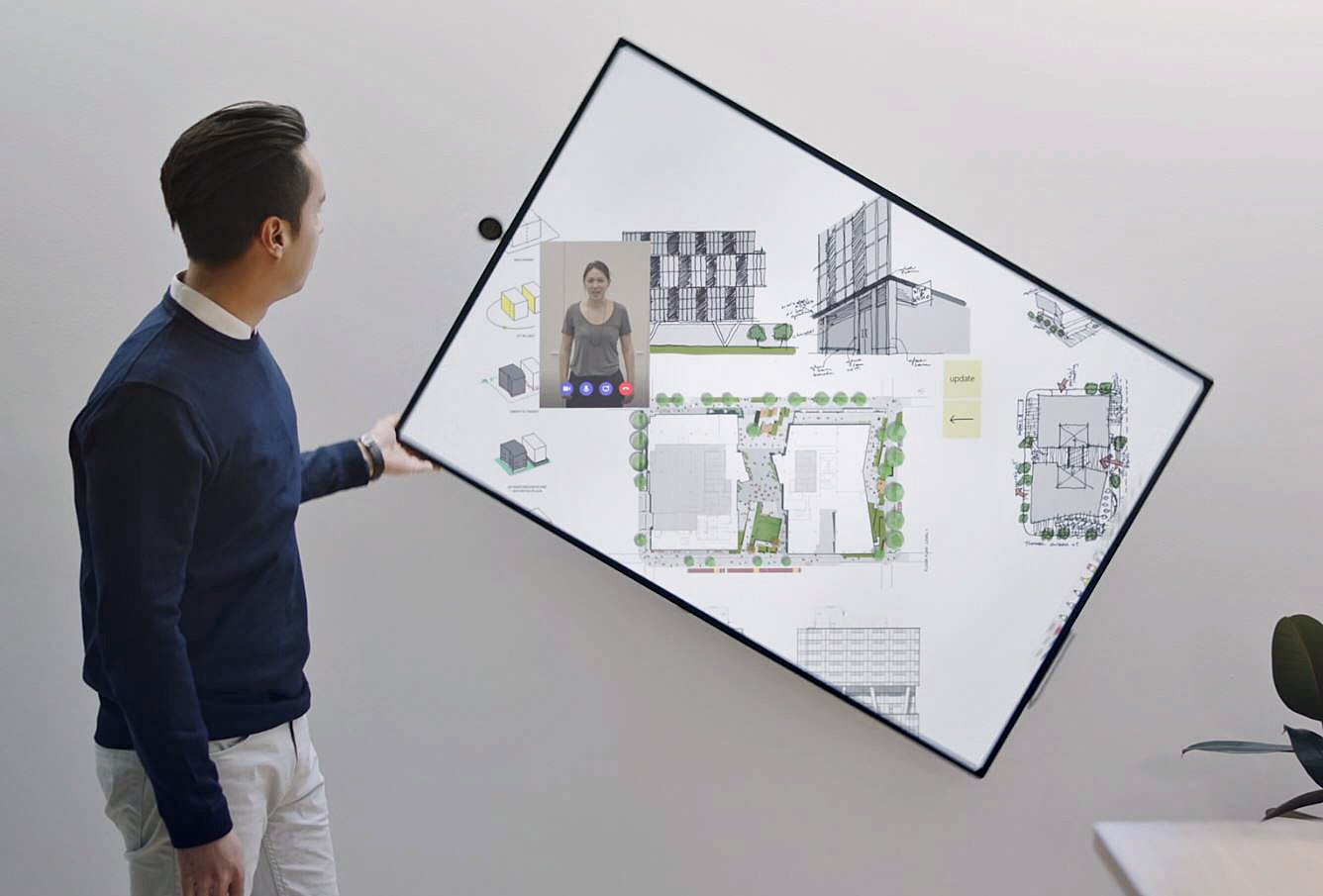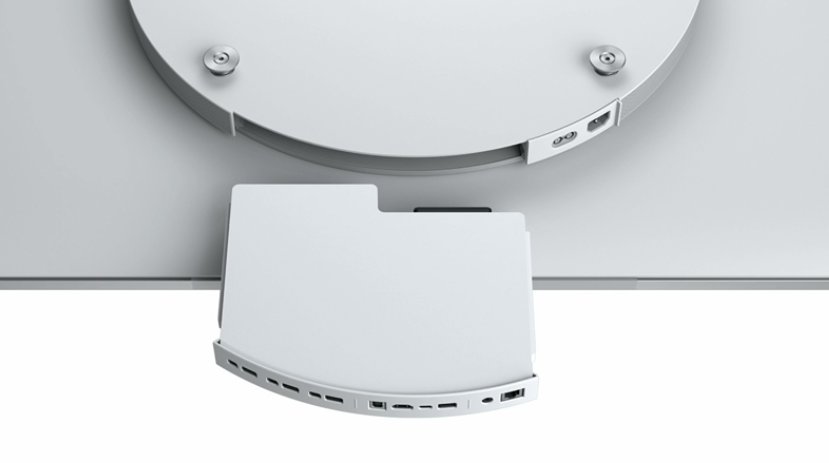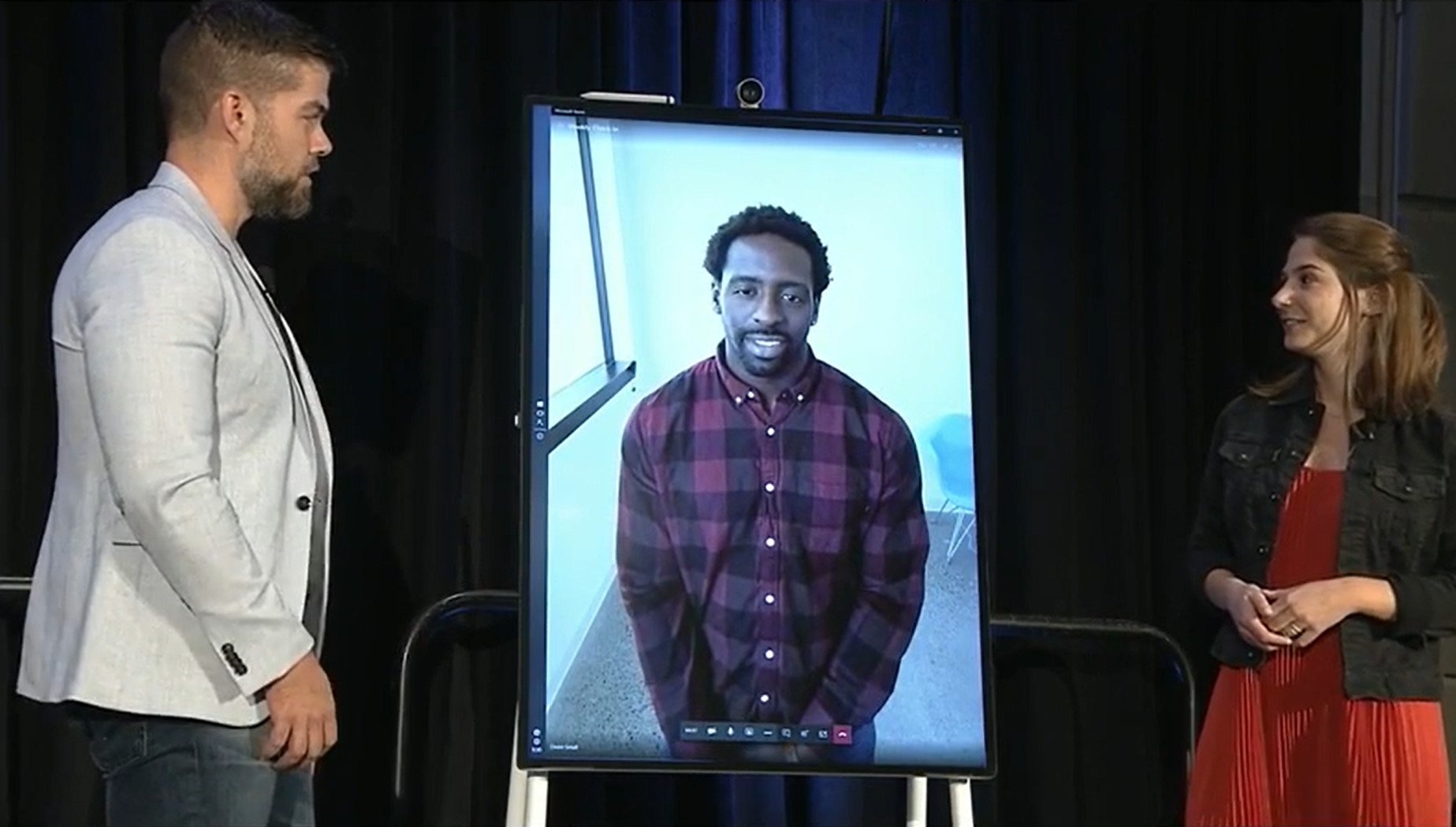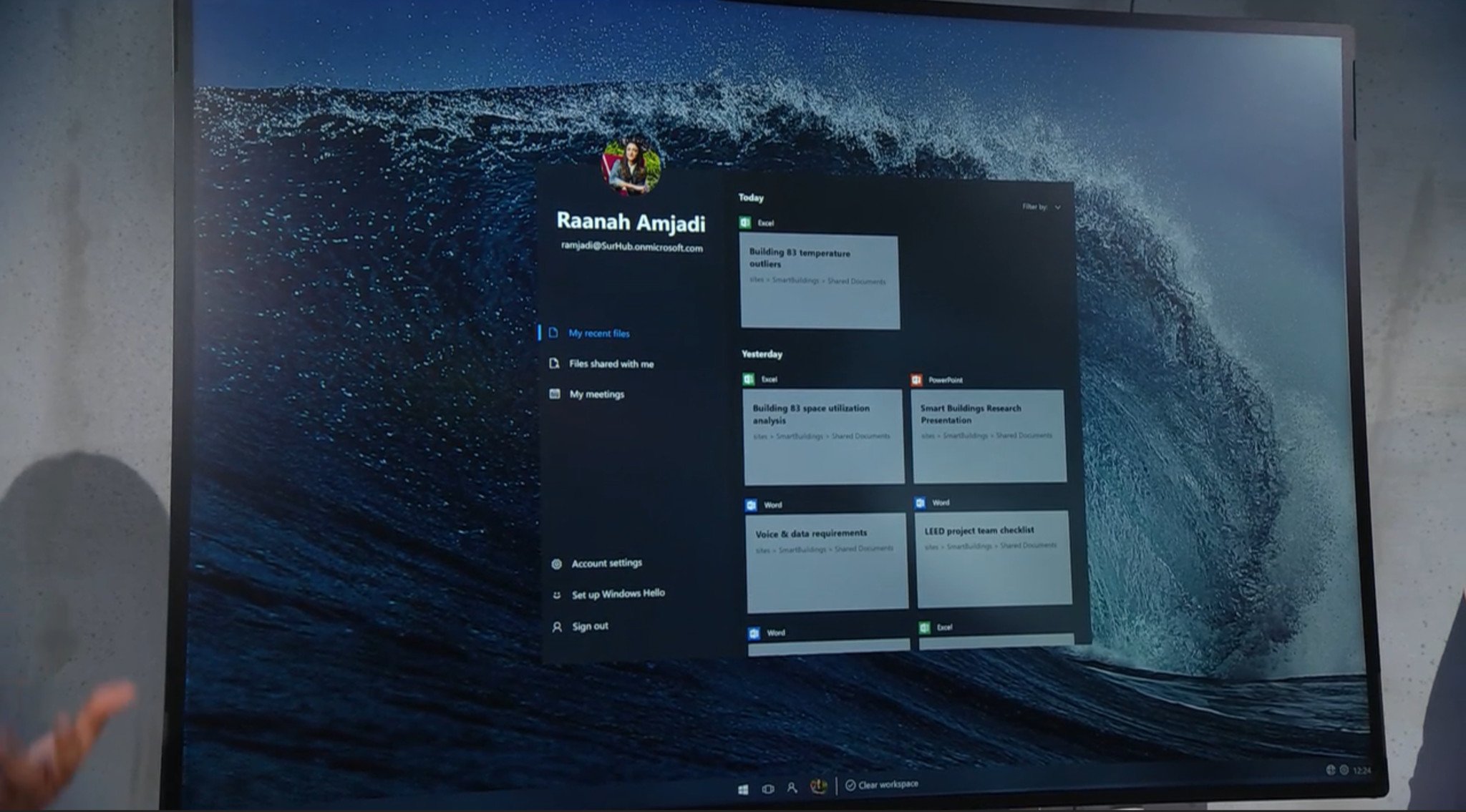Hands-on with the slick new Surface Hub 2 and its version of Windows Core OS
The new Surface Hub 2 brings more than a new form factor. It also offers a new take on Windows and collaboration.


This week at Microsoft Ignite, I had the chance to go hands-on with the new Surface Hub 2S and Surface Hub 2X. I was able to touch them, ask questions, and find out a little more about the upcoming collaborative display from Microsoft. Surface Hub 2S and Surface Hub 2X are two very interesting devices, if only because they're almost the same device — the only real difference between them is software.
Before we dive into the software, however, let's talk a bit more about that hardware. This was the first time I had seen a Surface Hub 2 up close, and unfortunately, we were not allowed to take photos or video of the devices. I can describe them to you, though: they are fantastic. You'll find a USB-C port on all four sides of the Surface Hub 2 so that you can plug in Surface Hub 2 peripherals like a webcam, fingerprint reader, and possibly other accessories in the future, no matter the orientation.
They both also feature the same 4K display, and four loud and clear speakers which are placed at the top and bottom of the left and right sides of the display, Unfortunately, Microsoft was not ready to talk about specifications such as processor, RAM, etc. so, for now, we don't know what those are going to be.
Surface Hub 2S

Starting with the Surface Hub 2S, this is the device that will begin shipping to customers in Q2 2019. It looks and feels exactly like the Surface Hub 2X, but with a couple of minor differences. First, it doesn't come with a fingerprint reader. Surface Hub 2S doesn't support the fingerprint module due to the OS being the old Surface Hub 1 OS. There's also no way to tile the Surface Hub 2S either, meaning you can't use multiple Hub 2's side-by-side as one giant screen.
The other notable difference about this hardware is that the Surface Hub 2S is configured in the landscape orientation, which cannot be changed. The Surface Hub 2S cannot rotate into portrait mode like in the videos we've seen, likely because the old Hub OS doesn't support this functionality. The rotation mechanism is locked out of box and will unlock when you switch out the upgradable computer in the back to the Surface Hub 2X module.
Surface Hub 2X

Surface Hub 2X is the device Microsoft announced earlier this year and won't be available until sometime in 2020. It is the jaw-dropping, smooth rotating, fluid, and beautiful Surface Hub 2 experience we've seen in the videos, and it is real. Differences in hardware include the upgraded computer module in the back, fingerprint reader support, and the ability to rotate the screen.
Microsoft was unable to show us the tiling feature, which lets you stack multiple Surface Hub 2's together to make one giant screen, as the hardware still isn't final. The demo we received included the cool rotation trick, opening a file in Office, and joining a video call in Microsoft Teams. When in portrait mode, video calls make the person on the other end feel almost life-sized.
Get the Windows Central Newsletter
All the latest news, reviews, and guides for Windows and Xbox diehards.
I had the chance to use the rotation mechanism on the Surface Hub 2X, and it works really well. It doesn't feel heavy, and it locks into the horizontal or vertical positions so that you don't accidentally bump it out of orientation. The software effect that keeps text and windows fixed in place when rotating looks cool, but as the software is still very early, it was a little jaggier than what we've seen in the official promo video, but still awesome nonetheless.
Windows Core OS

So, I was personally very excited to get my hands on the Surface Hub 2 because I was very interested in poking around in the OS. As we've written about in the past, Microsoft is working on a new, modern and universal version of Windows 10 called Windows Core OS, which will run on all kinds of devices, including Andromeda, HoloLens, and of course, the Surface Hub 2X. The version of Windows Core OS that runs on Surface Hub 2X is known as Aruba, or Hub OS, and features an experience tailored to the large, collaborative display form-factor.
This is the first time Microsoft has let press play around with a version of Windows Core OS, but the company still isn't ready to talk officially about what Windows Core OS is all about. Still, I had a brief few minutes to tap around the OS to see if I could find anything interesting. Microsoft was watching over my shoulder closely, however, so I couldn't dive in too much without someone telling me "NO!"
I could tell that the shell is CShell based, which is rocking the new, updated, and simplified System Tray design. The clock in the bottom right now only shows the time, omitting the date which makes the whole thing look much cleaner. It also featured Control Center, which something I wrote about back in 2017. Control Center looks very different in today's builds of Windows Core OS compared to what was leaked back in 2017, featuring Acrylic Blur effects and access to quick actions, a brightness slider, and more.
The Start Button, Timeline, and People buttons are placed in the center of the taskbar, which does differ across the different Windows Core OS experiences. For example, on Polaris, the Start button is in its usual place. Placing the Start and Task View buttons in the center of the taskbar is much better on a device like Surface Hub 2X however, as it means those using it can touch those buttons regardless of what side of the screen they're standing on.
Microsoft also showed off multi-user support, which I believe is a Windows Core OS specific thing. This allows multiple users to be logged into the same desktop at the same time, allowing documents and files to be shared across apps from two separate accounts. This is the evolution of the "family desktop" idea that was originally put forward with Home Hub, now being used on Surface Hub 2X.
The Surface Hub 2X lock screen is also very beautiful. I believe you can ink directly onto the lock screen for quick note taking that remain there until wiped away. Microsoft is also working on live wallpapers for Windows Core OS devices, although that feature wasn't being demoed to us in our brief session with the device. I also noticed that apps now feature a slightly heavier drop-shadow effect, which looks really nice.
I did ask Microsoft about whether or not Surface Hub 2X will run Win32 programs, but they were not willing to comment on that subject. I know from sources however that, at least as of right now, Surface Hub 2X cannot run Win32 programs. Since it's running Windows Core OS, it doesn't have any of the legacy guts to be able to run those programs. It's a UWP-only experience.
Overall, Windows Core OS is still absolutely happening. It's the future of Windows across all these modern devices, which is super important to stress. It's unclear which devices will be the first to ship with Windows Core OS however; we know Surface Hub 2X is shipping in 2020, but HoloLens 2 is supposed to be announced next year, and that will run Windows Core OS too. I have heard that Windows Core OS for HoloLens 2 is further behind than it is on Surface Hub 2X however, so we'll have to see.
For now, I am very excited about Surface Hub 2 and Windows Core OS. What are your thoughts on the Surface Hub 2 so far? Let us know in the comments.

